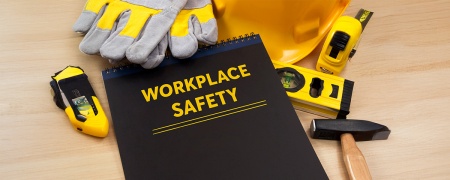The following is an excerpt from the GAWDA Safety Organizer, a monthly bulletin sent to GAWDA members. For more information on the GAWDA Safety Organizer, or to read past issues, visit the GAWDA.org Members-Only Section.
DOT website
- New Requirements for Entry-Level Driver Training—Information Available at https://tpr.fmcsa.dot.gov/
Final Rule
- Mandated by Congress, final rule issued in 2016 on driver training curriculum for entry-level CDL drivers; applicants for Class A or B CDL, or hazmat endorsements, required to complete knowledge and behind-the-wheel training from an instructor under FMCSA standards; training entities will self-certify compliance.
- List of certified training entities will be listed on FMCSA website on the Training Provider Registry.
- Compliance date extended to February 7, 2022; delay gave FMCSA time to develop the online Training Provider Registry, and States time to modify their information technology systems and procedures to accommodate their receipt of driver specific ELDT data from the TPR.
Who is Subject to ELDT Regulations?
ELDT regulations establish minimum training requirements for entry-level commercial motor vehicle (CMV) operators in interstate and intrastate commerce who are applying for:
- A Class A or Class B commercial driver’s license (CDL) for the first time;
- An upgrade of their CDL (e.g., a Class B CDL holder seeking a Class A CDL); or
- A hazardous materials (H), passenger (P), or school bus (S) endorsement for the first time.
The requirements do not apply to individuals holding a valid CDL or an H, P, or S endorsement issued prior to February 7, 2022. Individuals who obtain a commercial learner’s permit (CLP) before the compliance date of February 7, 2022, are not subject to ELDT requirements as long as they obtain a CDL before the expiration date of the CLP or renewed CLP.
When are the ELDT Rules Effective?
- Beginning February 7, 2022, applicants must complete the training required in 49 CFR part 380, prior to obtaining any of the following commercial license credentials for the first time: a Class A or Class B commercial driver’s license (CDL); an upgrade to a Class B or a Class A CDL; or a hazardous materials (H) endorsement for the first time.
- Driver applicants must obtain training from a training provider listed on the Training Provider Registry.
- States may not issue CDL or HME without verification of training.
Who can be a Training Provider?
Any entity (motor carrier, vocational or private school, etc.) may be a Training Provider. To be eligible for listing on the Training Provider Registry, an entity must meet the following requirements set forth in 49 CFR § 380.703:
- Follow a curriculum that meets the applicable criteria in Appendices A-E of Part 380;
- Use facilities meeting the criteria in § 380.709;
- Use vehicles meeting the criteria in § 380.711;
- Use instructors meeting the criteria in § 380.713;
- Meet recordkeeping requirements in § 380.725;
- Be licensed, certified, registered, or authorized to provide training in accordance with the applicable laws and regulations of any State where in-person training is conducted.
- Training providers must attest that they meet the specified requirements. In the event of a FMCSA audit or investigation of the provider, they must supply documentary evidence to verify their compliance. Training providers must continue to meet the eligibility requirements to stay listed on the Training Provider Registry.
SDLA Verification
|
TYPE OF LICENSE OR ENDORSEMENT: |
SDLA MUST VERIFY COMPLETION PRIOR TO ALLOWING |
|
Class A or Class B commercial driver’s license (CDL) Passenger (P) endorsement School bus (S) endorsement |
Skills test |
|
Hazardous materials (H) endorsement |
Knowledge test |
Role of State Driver Licensing Agency (SDLA)
- SDLAs must verify that an entry-level driver has completed the required training before allowing the driver to proceed with testing.
- Training provider must submit driver’s information to SDLA by midnight of 2nd business day following completion of training.
- The point at which the SDLA must verify completion of entry-level driver training depends on the type of license or endorsement the applicant is seeking.
Training Curriculum
- Driver must complete a mandatory theory (knowledge) and behind-the-wheel (BTW) training program to take the skills test for a CDL.
- In the case of a hazardous materials (H) endorsement, the driver must complete mandatory theory (knowledge) training provided by a training provider listed on FMCSA’s Training Provider Registry prior to taking the knowledge test for the H endorsement.
Training Specifics
- No minimum number of hours for classroom or behind the wheel training
- Must complete the curriculum areas set out in 49 CFR Part 380
- Appendix A has CDL Class A curriculum requirements.
- Appendix E has HME curriculum requirements.
- BTW training must be conducted in the type of vehicle for which CDL is sought (Class A or B)
- Once training is complete, Training Provider submits info to SDLA in the State requested by driver applicant.
What Must Your Company Do?
- You are already required to verify that a driver has a CDL with a valid HME before allowing the driver to operate a commercial motor vehicle with a placarded load of hazmat.
- This rule does not impose new requirements on motor carriers (GAWDA distributors); it simply requires the drivers to meet training standards before obtaining or upgrading a CDL Class A or B or obtaining an initial HME.
I want to thank Rick Schweitzer for all the above materials.



